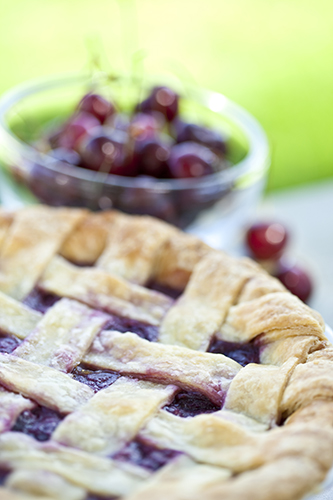How to Make it Easier for Those with Dietary Needs to Eat Safely & Feel Included
As we (i.e., me and my U.S.-based readers) celebrated 242 years our country’s independence this week, I got to thinking about the words independence and freedom, how they relate to food and beverage, and what I do to promote safe and inclusive food environments.
By Merriam-Webster’s definition, independence, in the simplest of terms, is “the quality or state of not being under the control of, reliant on, or connected with someone or something else.” And the definition of freedom is “the absence of necessity, coercion, or constraint in choice or action.”When we’re young, freedom and independence revolve around buying our first car, moving out of the house, getting a job, earning our own money and/or living on our own. Until now, I’ve never really thought about the concepts as they relate to eating, but it is very fitting, especially when eating outside of our homes.
Independence is “the quality or state of not being under the control of, reliant on, or connected with someone or something else.”
When we dine out or attend an event, our freedom and independence in regards to what we’re eating or, more specifically, knowing what is in our food is severely restricted. Yes, we can choose the restaurant, the cuisine, the style of the place where we dine. We can even choose the events to attend. When it comes down to the food we specifically eat, however, it is very challenging and sometimes prohibitive for people with special dietary needs.

In an ideal scenario we would all have the freedom to eat anything and everything placed in front of us without care. (OH…my eyes and my stomach are dreaming about cherry pie and blueberries.) Yet, when a person with dietary needs — food allergies, celiac disease, heart disease, vegan, kosher, vegetarian — eats away from home, their independence and ability to eat freely is taken away.
Last weekend a friend said to me, “I think of you often when attending events and I can’t find anything to eat. I realize eating gluten-free is much easier now than it probably was in the past, but eating out and at events is very challenging.”
I realize eating gluten-free is much easier now than it probably was in the past, but eating out and at events is very challenging.”
Being new to eating gluten-free because she was diagnosed with Hashimoto’s Disease last fall, she’s still learning how to navigate dining out — a requirement for her job — and the realities that most people who order and/or serve food are not aware of the necessities of providing safe food environments.
She went on to give me examples of how servers didn’t know what’s in the food they were serving her or how at several business meetings all they offered were items that contained bread of some fashion.
For those of us in the hospitality and food service industry — or even if you’re hosting a party at home, selecting menus for the next conference, hosting a staff meeting or taking customers out to dinner — we need to be at the forefront of providing food independence for our guests, employees, participants and customers. When 251 million people attend 1.9 million meetings and spend $798.7 billion in restaurants each year (just in the US alone),* providing food freedom is not merely an ideal it’s an obligation. And it is up to all us to take a stand against its one true enemy: ignorance.
So, I ask you, on the next occasion where you’re providing food to others, think about ways you can give those you’re feeding the independence to eat freely with you.
How to Provide Food Independence
- ASK if anyone has dietary needs in advance of planning the menu.
- ACCEPT that not everyone eats the same as you.
- LEARN how to create items that are free-from allergens or other “offending” items (you may even find something new you like).
- INCORPORATE or eliminate the needs from the menu all together (e.g. make everything you serve egg-free or dairy-free)
- KNOW the ingredients in the food you’re serving, and be ready to share that information if asked.
- PROVIDE labels for the menu items identifying any allergens and dietary needs it meets.
- FURNISH meal/chef cards for guests to provide to servers to distinguish themselves
- EDUCATE others on your staff, in your family and your vendors on specific dietary needs so they can be conscious, knowledgeable and supportive.
*Statistics come from the Events Industry Council 2016 Economic Impact Study and the 2017 National Restaurant Association Restaurant Industry Outlook.



